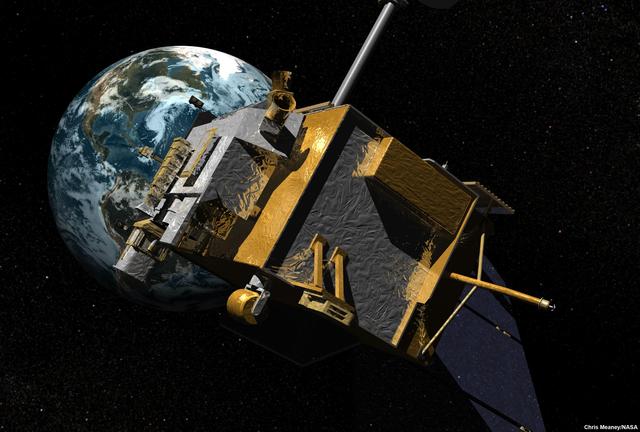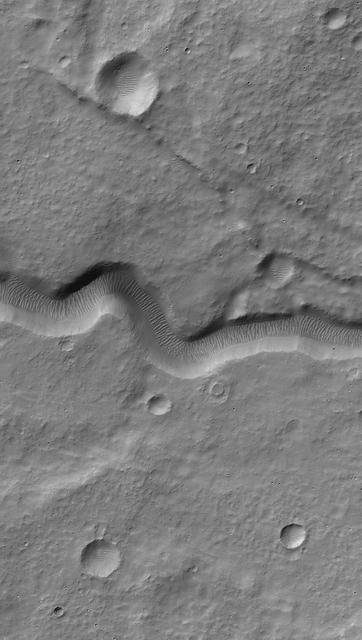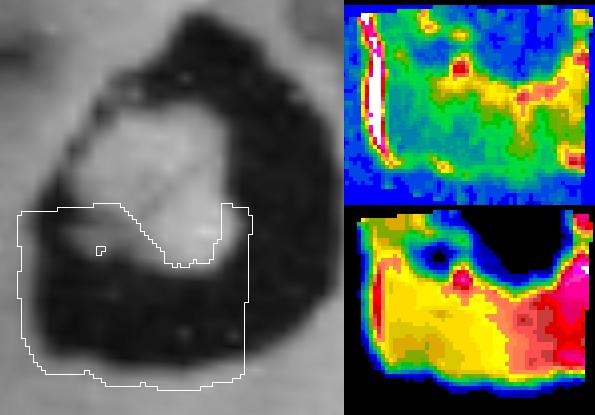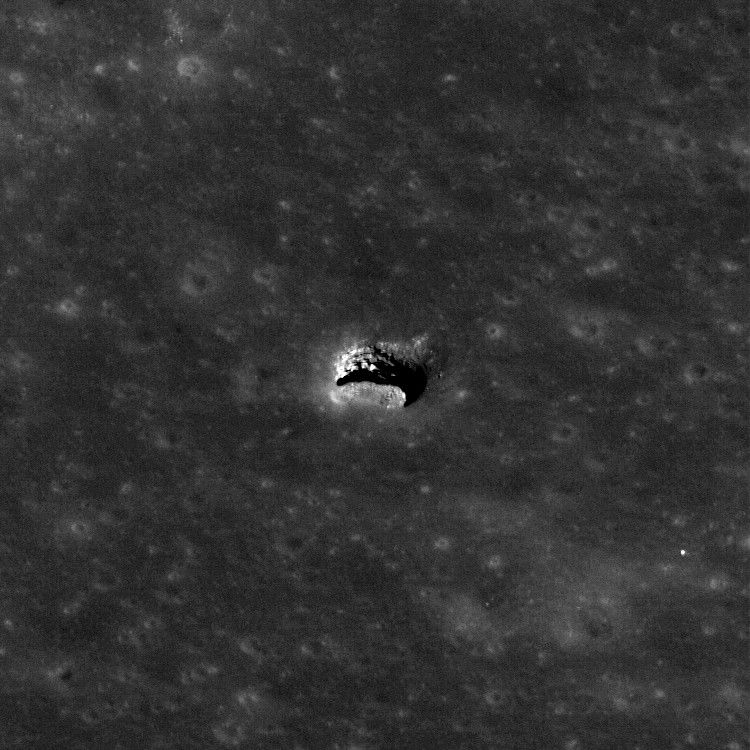Caves were humanity’s earliest homes – natural refuges that shielded our ancestors from harsh weather, predators, and danger, long before we built walls or wielded advanced tools. Today, as we set our sights on the Moon, we may once again find protection in these nature’s shelters. Could remnants of ancient lunar volcanoes serve as ready-made fortresses under the Moon’s harsh surface?
Just as they once offered safety on Earth, lunar caves might provide vital shelter for future explorers venturing into the Moon’s harsh, airless world. But what are these lunar lava tubes, exactly? How did they form, and why do scientists and engineers find them promising as habitats? Below, we answer all of these questions and also look at missions studying lunar caves and the technologies needed to make these natural bunkers under the lunar surface livable.
What Are Lunar Lava Tubes & How Did They Form?

Lunar lava tubes are essentially underground caves left behind by flowing lava. Billions of years ago, the Moon’s surface was covered by seas of molten rock (basaltic lava) that solidified over time into the dark basalt plains we now see as lunar maria. Because of this, researchers have speculated for years that, much like Earth, the Moon might also contain volcanic formations like lava tubes.
As a lava stream slowly cooled from the outside, it formed a hard crust on top while still flowing underneath. Eventually, the lava drained away, leaving a hollow, cylindrical tunnel beneath the hardened crust. This process is the same as on Earth – imagine pouring thick lava into a riverbed; once the flow stops, a tunnel remains where the lava once coursed.
These tubes can be vast under lunar gravity (about 1/6th of Earth’s gravity). Because there is no atmosphere to cool the lava quickly, lunar lava tubes grow much larger than Earth’s. Modeling studies estimate that Moon tubes can be hundreds of meters wide, hundreds of meters deep, and tens of kilometers long – truly cavernous spaces. In contrast, Earth’s basaltic tubes (like those in Hawaii) are often only a few meters across. They often follow ancient sinuous rilles (meandering channels) on the surface.
As each tunnel formed, sections of the regolith and rock collapsed, leaving skylight pits on the surface. Over 200 such pit craters have been identified on the Moon, and these are likely places where the chamber roof gave way into the void below. For example, the famous Marius Hills pit on the Moon’s near side is about 60–65 meters across and 40 meters deep. Scientists believe it marks a hole in the ceiling of a much larger subsurface lava tube underneath. These have been some of the most compelling evidence for lunar tubes.
Lava Tube Structure and Environment

NASA’s Lunar Reconnaissance Orbiter (LRO) even used angled imaging to reveal “sublunarean voids” under surface pits. In one case, LRO pointed its camera just right at the Marius Hills pit, about 65 meters in diameter, and captured sunlight spilling into a collapsed lava chamber.
Inside these tubes, conditions are radically different from the exposed surface layer of the Moon. How hot are lunar lava tubes? Surprisingly, temperatures deep underground stay nearly constant, since the rock muffles the extreme day-night swings above. For instance, measurements show that some pit interiors hover around surprisingly comfortable 17°C (63°F) year-round, even though surface temperatures swing from about +127°C by day to –173°C at night. The rock walls also absorb cosmic and solar heat, acting like natural insulation.
Importantly, a lava tube’s ceiling of solid rock provides a thick shield. Studies estimate that even a few tens of meters of lunar rock can cut galactic cosmic-ray (GCR) and solar radiation (Solar Particle Events (SPE)) to safe levels. For example, an old NASA analysis calculated that astronauts living under the Moon’s lava-tube roof would see vastly reduced radiation exposure (and a steady ~–20°C environment). Since these tunnels have Earth-like temperatures and natural protective armor, they are particularly intriguing as potential shelters for future lunar bases.
Why Planetary Scientists and Engineers are Excited
A simulation showing what it might look like to dive into a lunar pit and explore a connected lava tube. Source: University of Manchester/ ESA
Lava tubes on the Moon are tantalizing for two main reasons: protection and science. For decades, scientists have proposed that lunar lava tubes could be prime candidates for housing human settlements on the Moon. These underground structures could potentially offer natural protection against the current biggest hurdles of lunar exploration and mining – space hazards like cosmic radiation, meteorite impacts, micrometeoroids, and debris from nearby collisions.
Additionally, unlike the Moon’s surface, which experiences extreme temperature swings between day and night, lava tubes maintain a relatively stable internal climate, making them a promising option for long-term habitation.
- Radiation Shield
Deep inside a volcanic skylight, astronauts could be sheltered by tens of meters of rock from harsh space radiation. Being under the Moon’s crust could cut the radiation dose by orders of magnitude.
- Impact Protection
The Moon’s surface is peppered by micrometeorites and flying debris. A tube’s rock roof absorbs tiny impacts and ejecta, so a colony inside is naturally armored against such hazards. Astronauts could shelter in these tubes inside habitat modules, as even just several meters of rock overhead would provide protection from radiation and from the Moon’s temperature swings.
- Thermal Insulation
Unlike the barren surface that blazes and freezes, a lava tube stays at a gentle, steady temperature. This translates to much less energy needed to heat or cool a habitat, with the tube acting as a natural thermal blanket.
- Ready-Made Structure
From an engineering standpoint, a lava tube is a giant natural cavern. Instead of hauling large building blocks, future colonies could plug entrances and install life-support inside these caves. NASA’s studies highlight that intact tubes “offer potential sites for lunar base construction” since their insides are pristine and already shielded. It’s like having a pre-dug underground bunker that only needs outfitting.
- Scientific Prize
Beyond the potential for habitation, tubes are time capsules of lunar history. These hidden caves and their walls would give scientists a window into the Moon’s volcanic past. Studying undisturbed basalt layers could reveal how the Moon cooled and evolved. A lava tube might even harbor ice or exotic minerals preserved from billions of years ago.
The Moon’s lava tubes are appealing natural fortresses. If we could safely tap into these promising skylights to reach the tunnels left by lunar lava flows, when the time comes, these caves might make safer, more sustainable outposts than habitats on the open plain.
Are There Lava Tubes on Other Planets or Bodies, Too?
Yes! Pits have actually been identified throughout the solar system, not just the Moon, including those on Mars, and some indicated even on Venus, Phobos, Eros, Gaspra, and several other celestial bodies, especially those with volcanic histories and low gravity. Here’s a quick tour of where else we might find them:
Mars

Mars is the second-best studied world for lava tubes after the Moon. High-resolution images from spacecraft like Mars Reconnaissance Orbiter have revealed long, sinuous channels and pit craters that strongly resemble lunar skylights – the telltale sign of collapsed lava tube roofs.
Due to Mars’ lower gravity and past volcanic activity, its lava tubes could be even larger than those on the Moon, possibly over 1,000 meters in diameter. Some even speculate that they could be prime locations to search for signs of past microbial life, since they might preserve ancient subsurface water ice.
Other Moons (e.g., Io, Enceladus)

Io (a moon of Jupiter) is the most volcanically active body in the solar system. With its constant eruptions, it likely has lava tubes, though surface imaging is limited, and the violent environment makes exploration challenging.
Enceladus (Saturn’s moon) and others like Europa are icy but may have analogous subsurface tunnels, formed by cryovolcanism (ice instead of rock). These would not be potential lava tubes in the classical sense, but they share some structural similarities and could also be targets for future exploration.
Earth (as an analogue)
Earth’s own lava tubes, in places like Hawaii, Iceland, and the Galápagos, serve as natural analogs for testing technologies. NASA and ESA have tested robotic systems and human survival techniques in these terrestrial tubes to prepare for off-world missions.
Why does this matter? Well, because such formations across the solar system could become critical tools for exploration and eventual habitation. On airless or thin-atmosphere worlds, they provide natural protection from radiation, micrometeorites, and climate extremes – the same reasons they’re so appealing on the Moon.
Missions Studying Lunar Lava Tubes

Multiple space agencies and companies have already turned their sights on these lunar caves. NASA’s Lunar Reconnaissance Orbiter (LRO) has been crucial, mapping pit skylights and imaging their walls. In 2009-2010, LRO spotted dozens of pits (hundreds of meters across) and even used an angled view to peer into one, catching glimpses of the “sublunarean void” beneath Marius Hills. These discoveries confirmed that many pits are indeed collapsed lava tubes.
The Japanese SELENE (Kaguya) mission also provided evidence of intact tubes. In 2009, JAXA’s LRS radar first detected the famous Marius pit. A 2017 JAXA analysis of Kaguya radar sounding data confirmed “multiple lunar lava tubes” extending tens of meters deep in this region. The research even mapped one tube floor extending tens of kilometers. This reinforced the idea that vast, uncollapsed passages lie beneath the crust.
Looking ahead, both government and private missions are currently targeting lunar caves:
NASA
While the Artemis program’s initial crewed missions (Artemis I-III) will land near the South Pole (not directly on lava tubes), NASA has funded studies of future cave explorers. For example, a NIAC project called “Spelunker” envisions a lander delivering tethers and autonomous robots into a skylight.
NASA’s Commercial Lunar Payload Services (CLPS) effort is also advancing landing tech; notably, the upcoming Artemis III crew will ride Orion and transfer to SpaceX’s Starship lander in lunar orbit, demonstrating new capabilities that could later be used to send teams or cargo near a lava cave.
ESA (Europe)
In 2023, the European Space Agency solicited small-mission ideas under its Terrae Novae program for lunar scouting. One proposal, the “LunarLeaper”, is a hopping robot designed to descend into a skylight and map the subsurface. ESA has also convened scientists and engineers to craft designs for “Moon cave” missions, including rovers to map cavities using gravimetric sensors or tethered probes. These efforts recognize that a scout mission could find the best lava tubes for future bases.
JAXA (Japan)
Beyond Kaguya, JAXA’s next-generation missions and interest in lunar geology may also look for lunar caves. Its SLIM lander, dubbed “Moon Sniper”, launched in 2023, aimed to perform high-precision landing tests. While not targeted at caves directly, such tech could be applied to reach skylights.
Unfortunately, the mission came to an end on August 23, 2024, after all attempts to reestablish contact with the spacecraft (last heard from on April 28, 2024) proved unsuccessful. Yet, this effort still holds value, as it represents a significant step forward in space exploration and the relentless pursuit of lunar knowledge.
Commercial (Private)
American companies are entering the search. For instance, Intuitive Machines’ Athena lander (IM-2), set to launch in 2025 on a SpaceX rocket, carries a small “hopping drone” nicknamed Grace, along with a drill capable of digging 3 feet beneath the surface in search of ice and three rovers. This robot is specifically designed to leap into lunar lava caves and tunnels.
If successful, Grace could send back the first-ever direct measurements and data from inside a lunar lava tube. Other private initiatives (like Astrobotic, Moon Express, etc.) have also discussed instruments for scanning lava tubes.
Other Nations
China’s lunar program is also eyeing caves. Some reports (and scientific papers) describe Chinese interest in detecting and using lava tubes for future bases. The Chang’e landers and rovers have imaged pits in the Gruithuisen Domes, and Chinese scientists talk about “long-term shelter on the Moon inside a lava tube. While no dedicated Chinese lava-tube mission has been announced yet, this is an area of active research globally.
Technological Challenges and Future Research

Turning lava tubes into habitats is promising but hard. Engineers point out several hurdles that we need to overcome before we put this idea into practice.
1. Access and Descent
First, landing a spacecraft safely right at a skylight edge and descending into a deep pit is nontrivial. Rovers or robots would need to climb or rappel down steep walls into total darkness. NASA notes that cave-exploration robots must be capable of “rappelling into voids, traversing rubble, [and] navigating safely in the dark” with little communication to Earth. The “Spelunker” concept we discussed imagines sending tethered rovers and a winch to lower them into a tube.
2. Power and Communications
Inside a lava tube, there is no sunlight for solar panels, and radio signals from the surface may not penetrate the rock. This means we need new ways to power and talk to subterranean explorers. Ideas include a tethered power hub lowered into the pit (as in the Spelunker study) or laser power beaming. Lander solar panels that provided power in cruise might also be repurposed to perform tethered recharging for the cave explorers.
Similarly, communication might rely on fiber optics or relays. Dubowsky and Boston (2006) proposed a many-robot approach using numerous small, low-cost robots that explore lunar caves by relaying communication among themselves. While this method is resilient to robot failure, the trade-off is limited capability due to the robots’ small size and budget constraints.
3. Habitat Construction
Once a lunar cave is found, building a home inside it is a complex engineering task. The tunnel will initially be in a vacuum, with jagged rock walls. To pressurize the space, we would likely need to seal cracks and possibly inflate modules against the ceiling. Civil engineers are considering stiffening structures or simply covering the cave roof with a layer of regolith (lunar soil) to add stability and prevent leaks.
Researchers are also studying how strong lunar basalt is. For instance, whether a tube’s roof can hold back pressurized air without collapsing. Some early simulations show it might be feasible to pressurize a broad tube, but this must be tested further.
4. Mapping and Site Selection
Only a few dozen skylights are known today, but the Moon may have hundreds of tubes. Finding the best tubes – ones that are big and stable enough, plus in good locations – requires more scouting. Scientists are developing methods like ground-penetrating radar, gravity field mapping, and high-resolution imaging to detect voids before landing.
For example, the previously described Japan’s SELENE Radar Sounder found lava tubes by looking for radar echoes, and NASA’s GRAIL gravity mission suggests density anomalies where tubes might exist. Continued orbital surveys and lunar drones will help pinpoint ideal cave locations.
5. Human Factors
Life inside a cave is another challenge. Interiors could trap lunar dust or have tricky lighting and air circulation needs. Any habitat will require robust life support (air, temperature control, waste recycling) in a confined, rugged space. Safety systems would be crucial to prevent fires or accidents in the narrow tunnel. These are solvable problems, but they mean additional research and testing on Earth (for example, analog studies in Earth caves or lava tubes).
Overall, many unknowns still remain. We need to understand the exact shape and stability of real lunar tubes, develop robots that can explore them, and invent ways to build and live underground. Each new study helps close the gap between an exciting idea and a working lunar base.
NASA NIAC research developed a draft technology roadmap for achieving mission readiness for the planetary cave exploration missions, including precision landing, communication, and power technologies:

Looking Ahead
Lunar lava tubes present a unique opportunity: nature’s own space station waiting to be used. As NASA’s Artemis program and other efforts advance, exploring these hidden caves is one of the steps toward a long-term lunar presence. The path forward will involve many missions. Luckily, lunar lava tubes have gone from mere theory to being actively explored by many players. NASA, ESA, JAXA, and private companies are planning the first steps to find, map, and eventually send rovers (and one day, hopefully, astronauts) into these subterranean tunnels.
The payoff could be huge – lunar bases with natural radiation bunkers, stable shelters, and direct access to pristine geological treasures. In the next decades, we may indeed find ourselves underground on the Moon, turning these ancient lava tubes into the cradle of humanity’s next space frontier.